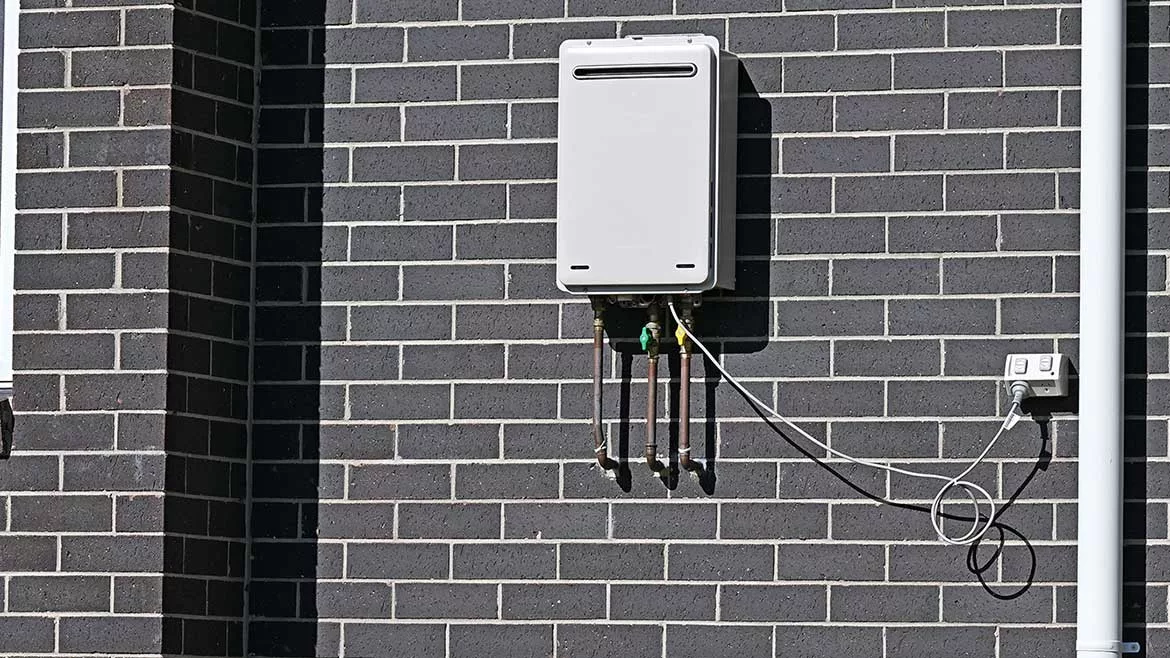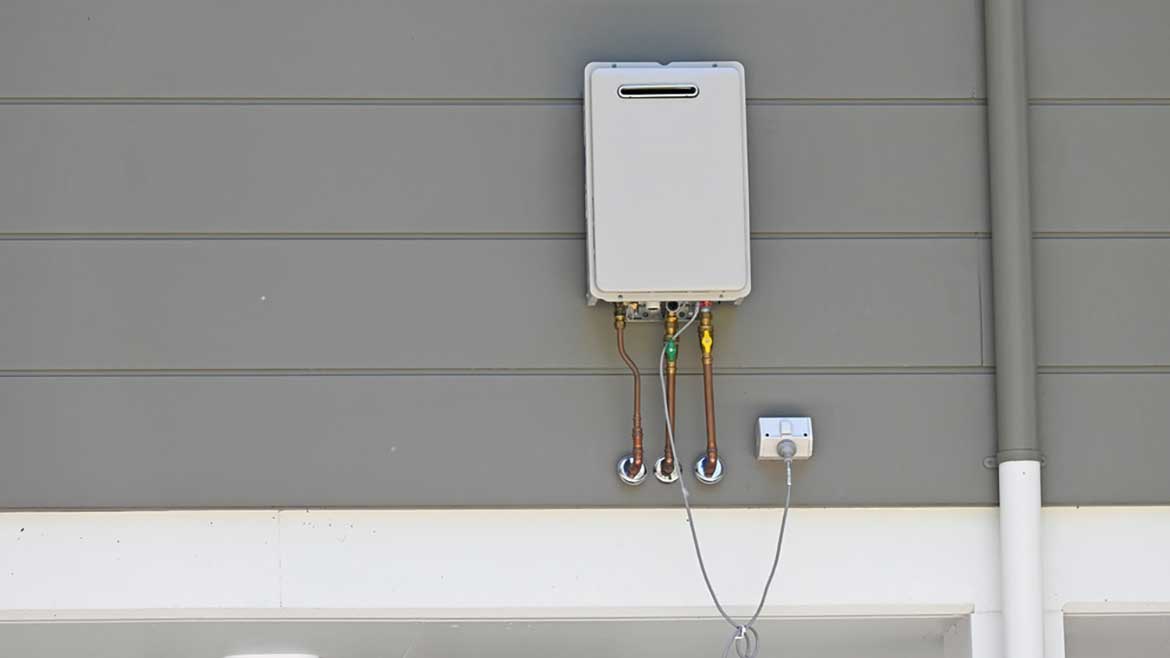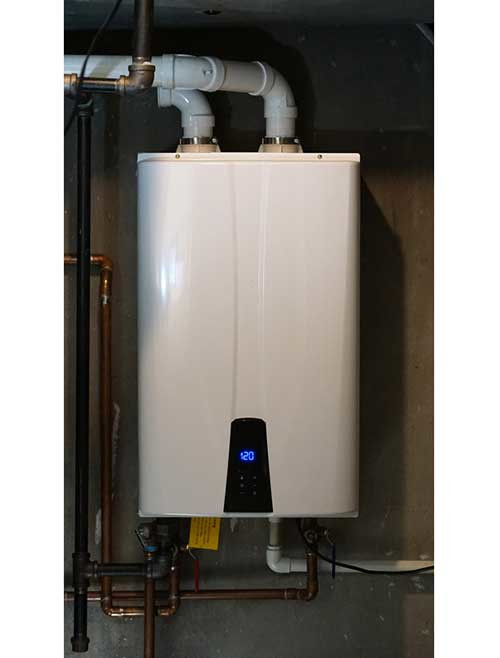Best practices for venting tankless water heaters
Installing vents correctly is essential for the efficient and safe functioning of tankless water heaters.

Ventilation is essential in tankless water heater installations to ensure exhaust gases are blown and dissipated outside instead of accumulating indoors, which can be harmful. Unlike traditional tank-style water heaters, you get a more versatile selection of venting options with gas tankless water heaters. Photo courtesy of Douglas Cliff / iStock / Getty Images Plus.
Gas-powered tankless water heater systems are among the most efficient water heating solutions. According to research, using propane tankless water heaters reduces energy consumption and greenhouse gas emissions by about 50%. These are among the reasons many homeowners opt for tankless water heating systems. Data shows that the tankless water heater market in the U.S. is expected to grow by 8.7% annually over the next decade.
For plumbing and heating professionals, using the best venting practices for tankless water heater systems, such as using concentric vents, providing vents that meet local code and going for aesthetically pleasing vent designs is crucial to ensuring homeowners love their installation and are within budget during the project.
Here's what you need to know about venting for tankless water heaters and how you can approach it for the least cost and best results.
The different types of tankless water heater vents
In tankless water heaters, ventilation is essential to ensure exhaust gases are blown and dissipated outside instead of accumulating indoors, which can be harmful. Unlike traditional tank-style water heaters, you get a more versatile selection of venting options with gas tankless water heaters.
These options offer versatility in installation, space usage and energy efficiency, making installing tankless water heaters more affordable and attractive to homeowners. Here are the most common types.
Power vent: Power vents use indoor air to heat your water, moving the same air outside after its heating cycle. Because of this operation, power vents only need an exhaust vent. However, they need a very large indoor space to get sufficient air for heating the water.
Direct vent: Direct vents consist of two vents, one acting as an intake for pulling in the air into the home from outside and another acting as an exhaust to remove the heated air to the outdoors.
Direct vents can be installed in smaller indoor spaces such as cabinets since air for the inlet is not sourced from inside the house. Therefore, they are an excellent choice for areas with limited spacing.
Concentric vent: Concentric vents are typically a single vent consisting of an intake and exhaust direct vent. Tankless water heater systems using concentric vents require less surface space for installation.
Unlike direct vents, concentric vents are not hot to the touch. Moreover, they are safer since the exhaust air is contained in the inner vent, preventing harmful gases from leaking into the home or interior space.
Installing vents correctly is essential for the efficient and safe functioning of tankless water heaters. Here are a few best practices you can follow.

You can install a tankless water heater outdoors with no additional venting in warmer climates.
Vent through the side wall
You are not limited to installing vents for tankless water heaters through the roof. If the interior space allows it, you can use a power vent to draw combustion air from the free space. However, if you must install a direct vent unit due to space limitations or other reasons, you can vent through the side wall.
Using the side wall for venting instead of the roof significantly saves contractors and builders on building materials and installation time, effectively making the tankless hot water system installation cheaper.
Concentric or common venting can help reduce wall penetrations
Fewer wall vent penetrations make installing tankless water heaters easier and more aesthetically pleasing.
Switching to a concentric vent is one of the most effective ways to ensure you keep wall penetrations at the bare minimum. Since the intake and exhaust vents are nested within each other, concentric vents are faster and easier to install than most other options.
Alternatively, if you're working on a project with multiple tankless water heating units, combining common venting can also help reduce the number of wall penetrations.
The banks of tankless water heaters can have a common intake and exhaust header, ensuring each unit doesn't require its vent to the outside. This also makes installing such large tankless water heater systems faster, more affordable, and aesthetically pleasing.
You don't need venting for outdoor tankless water heaters
You can install a tankless water heater outdoors with no additional venting in warmer climates. Tankless water heaters are typically designed to withstand below-freezing temperatures through self-warming, preventing freezing and cracking.
However, because the heating elements rely on electricity, the tanks can freeze in areas with very cold climates and frequent power outages. For such areas, installing the tankless water heater indoors is the best option since the temperatures are more regulated within the house.
Otherwise, if the climate is warm and power outages are infrequent, you can install the tankless water heater outdoors, reducing your venting needs and saving on costs, interior space, and installation time.

Mark Ligon is the marketing manager at Commercial Industrial Supply, a supplier of commercial PVC and CPVC pipe, fittings and valves.

The high efficiency of condensing tankless water heating units carries significant vent installation benefits. Because more heat is extracted from the exhaust, exhaust temperatures are much lower, allowing condensing units to use vents made from less-expensive plastic materials such as polypropylene and PVC
Condensing units often need less expensive venting
Condensing tankless water heaters are popular among homeowners because of their efficiency benefits. This tankless water heater uses a second heat exchanger to transfer more heat to the water, achieving up to 96% efficiency.
The high efficiency of condensing tankless water heating units carries significant vent installation benefits. Because more heat is extracted from the exhaust, exhaust temperatures are much lower, allowing condensing units to use vents made from less-expensive plastic materials such as polypropylene and PVC.
Noncondensing tankless water heaters are typically less expensive than condensing units but require more expensive metal vents due to higher exhaust temperatures.
Don't use existing venting from an old gas tank water heater
It is not recommended that you use existing venting from an old gas tank water heater as it may not be compatible with the specs for the tankless water heater vents. Most vents for old gas tank water heaters are galvanized and rust more quickly.
Depending on the manufacturer's specifications, propane tankless water heater units require special stainless-steel pipes for vents or suitable plastic materials such as PVC for condensing units.
Ensure you've met local code
Before installing a tankless water heater and associated accessories, it is essential that the installation plan passes local codes and standards to avoid messy and costly fixes later.
You should take the time to prepare for building department reviews which will often require you to have the manufacturer's tech support number and installation specifications on hand to answer several questions during the review process.
Talk to an expert
Tankless water heating units will steadily rise in popularity as more homeowners install them into their spaces due to the energy and cost savings. Talk to an expert and learn how to provide better vent solutions based on your project.
Looking for a reprint of this article?
From high-res PDFs to custom plaques, order your copy today!








